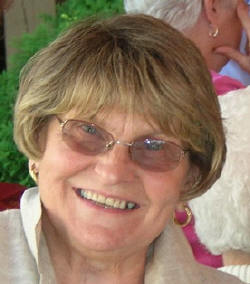Betty Jakum
Adams County Master Gardener

(8/4) Been to any good plant sales lately? It’s a question often heard in April or May but seldom this time of year. However, with fall approaching faster than we think, it is not an unreasonable question primarily because fall is one of the best times of the year to plant.
The number of gardeners out hunting for plants in late summer is growing. There are those diehard gardeners who always have an eye out for good plant bargains and interesting, unusual perennials, shrubs and trees, There are those whose containers and window boxes are in need of renovation to more seasonal textures and colors of yellows, reds and
bronzes.
Changing out tired looking flower containers can provide just what’s needed for a fall garden. Primarily, those who want to renovate garden containers should be looking for plants with the ability to withstand cooler temperatures and occasional frosts. Fall is a great time to look to leaf foliage for color. Foliage adds color without the need for
flowers. Many foliage plants even develop more color when temperatures get colder. One such group is ornamental grasses. For example, Purple Fountain Grass never looks better as its color deepens into fall.
Unfortunately, many of the plants used to renovate fall garden containers are annuals, plants that do not overwinter in our area (Zone 6b). Two of the best fall foliage annuals whose color palettes are perfect for fall are Coleus and Sweet Potato Vines. Both continue growing well into November some years; however, neither is frost tolerant. When
there is even the slightest hint of frost, and there are always one or two cold snaps during fall, these plants need to be protected. Planting in containers makes this job a little easier. An old sheet or other light-weight fabric does a wonderful job of keeping light frost from harming them. However, they cannot tolerate a hard freeze and will die.
Keep in mind that plants slow down as the weather cools and the day-lengths shorten. How full the container looks when planted in late summer is pretty much how it will look all season. These plants will not grow as vigorously as spring planted ones. Also, watch that you are watering properly. Water less in fall and check to make sure your
containers actually need watering especially as fall deepens. Fertilizing in fall is likely unnecessary. If you feel you must fertilize, use the water soluble type at half strength. Some colorful annuals to choose from include the familiar Mums and Flowering Kale, along with Marigolds, Hyacinth Beans, Sunflowers, Mexican Sunflowers, and Canna Lilies.
I’ve included Mums in this annuals listing because in my garden, they rarely survive the winter even though they are often tagged as Hardy Mums. If you can keep them returning year after year after year, I salute your gardening skill, but most of us just buy new plants when fall arrives.
Another, more permanent way to add a touch of autumn to the landscape is by planting perennials, shrubs and trees with an eye for fall color and texture. Goldenrod, Asters, Sheffield Daisies, Black-eyed Susans, Pansies, Caryopteris, Montauk Daisies, Sedum, Purple Coneflowers, Blanket Flowers, Coreopsis, Chocolate Joe Pye Weed, Purple Beauty Berry
and Paper-Bark Maple just begin a listing of colorful possibilities.
Planting in the fall provides many advantages for gardeners. After the chaos of spring and summer gardening, weather cools and things slow down. These conditions benefit both gardeners and plants. Rainfall is usually adequate. The soil is still warm, allowing roots to grow until the ground freezes.
Fall has more good days for planting, less extreme weather, better working conditions, and more free time for gardeners. Pests and disease problems fade away in the fall. Plants need less maintenance. In fact, fertilizing in fall is discouraged. It promotes new, tender growth that’s usually killed off by winter weather.
Gardeners should stay aware that, when planting in fall, plants and gardeners alike are concentrating on root growth not necessarily top growth. Even if perennials, shrubs and trees are looking sad and bedraggled, plant them in the ground anyway. Water them in and lay down a blanket of mulch for protection until next spring.
 One major obstacle gardeners face is acquiring new plants. Larkspur, Spider Plant, Bread Poppies and other annuals produce many seeds. Perhaps someone you know grows them and wouldn’t mind sharing some seeds with you. A friend may have a large stand of Black-eyed Susans and is willing to
dig a clump for you to divide and plant. Ask her. Check with a local garden club member or county Master Gardener for ideas about acquiring plants.
One major obstacle gardeners face is acquiring new plants. Larkspur, Spider Plant, Bread Poppies and other annuals produce many seeds. Perhaps someone you know grows them and wouldn’t mind sharing some seeds with you. A friend may have a large stand of Black-eyed Susans and is willing to
dig a clump for you to divide and plant. Ask her. Check with a local garden club member or county Master Gardener for ideas about acquiring plants.
Leftover plants found in greenhouses, nurseries and big box stores look pretty pathetic this time of year, but the prices will be right. Regardless of what the top growth looks like, if the root system still looks vigorous, take a chance on them. Last year, I got some Anemone plants that looked so woeful the clerk didn’t even charge me. I planted
them, and they bloomed this summer. Sometimes planting a flower becomes an act of faith.
Locally, the Littlestown Area Garden Club has been holding a fall plant sale for the past 8 years in connection with the Littlestown Good Ole Days Festival in Crouse Park, Littlestown. This year the event will take place on Saturday, August 19, from 8 am to 4 pm. Most plants are grown locally by garden club members. For sale at reasonable prices
are perennials, annuals, herbs, houseplants, some shrubs and trees, and other garden-related items. Proceeds benefit the Littlestown Area Garden Club’s community service projects.
Have fun in the garden this fall. Remember, it’s a great time for planting.
Read other fall related gardening articles